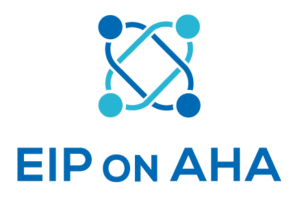
The European Innovation Partnership in Active and Healthy Ageing (EIP on AHA) is an initiative launched by the European Commission to foster innovation and digital transformation in the field of active and healthy ageing. Its overarching target is to increase the average healthy lifespan of EU citizens by 2 years by the year 2020.
The EIP on AHA pursues a Triple Win for Europe:
- Improving the health and quality of life of Europeans with a focus on older people;
- Supporting the long-term sustainability and efficiency of health and social care systems;
- Enhancing the competitiveness of EU industry through business and expansion in new markets

The “Monitoring and Assessment Framework for the European Innovation Partnership on Active and Healthy Ageing” (MAFEIP) intends to support evidence-based decision-making processes for all institutions and users in the EU health and care sector. It is a web-based tool whose purpose is to estimate the health and economic outcomes of a large variety of ICT enabled social and health innovations, including new care pathways, devices, surgical techniques, and organisational models, among others.

The European “Blueprint on Digital Transformation of Health and Care for the Ageing Society ” reflects the common policy vision of European policy makers, civil society, professional organisations and industry. As a shared policy vision, the Blueprint guides the efforts of the EIP on AHA Action Groups and Reference Sites. The Blueprint is essential to mobilise investments and guarantee the commitment of all actors including industrial players, regional authorities, professional and civil society organisations and multi-stakeholder platforms.

The purpose of the Innovation to Market (I2M) initiative is to improve the match between the demand side and supply side in AHA, by engaging in a dialogue and organising a series of activities and services that involve the two sides of the market.
On April 25th 2018, the European Commission published a “Communication from the Commission to the European Parliament, the Council, the European Economic and Social Committee and the Committee of Regions” on enabling the digital transformation of health and care in the Digital Single Market; empowering citizens and building a healthier society.
The internet and digital technologies are transforming our world. Barriers online can deny people the full benefits that digital developments can offer.
Making the EU’s single market fit for the digital age requires tearing down unnecessary regulatory barriers and moving from individual national markets to one single EU-wide rulebook.
The Digital Single Market designates the strategy of the European Commission for the best possible access to the online world for individuals and businesses.
A Digital Single Market (DSM) is one in which the free movement of persons, services and capital is ensured and where the individuals and businesses can seamlessly access and engage in online activities under conditions of fair competition, and a high level of consumer and personal data protection, irrespective of their nationality or place of residence.
The eHealth Network was established under Directive 2011/24/EU of the European Union. It is envisioned as a voluntary network connecting national authorities responsible for eHealth designated by the Member States. The purpose of the eHealth Network is to support and facilitate cooperation and the exchange of information among Member States.
eHAction is a Joint Action supporting the eHealth Network. It is a collaborative action between Member States/ Countries (MS/C) participating in the third Health Programme to develop, share, refine, test tools, methods and approaches to specific issues or activities and engage in capacity building in key areas of interest. Joint Actions have a clear EU added value and are co-financed by European Commission and MS authorities that are responsible for health.
